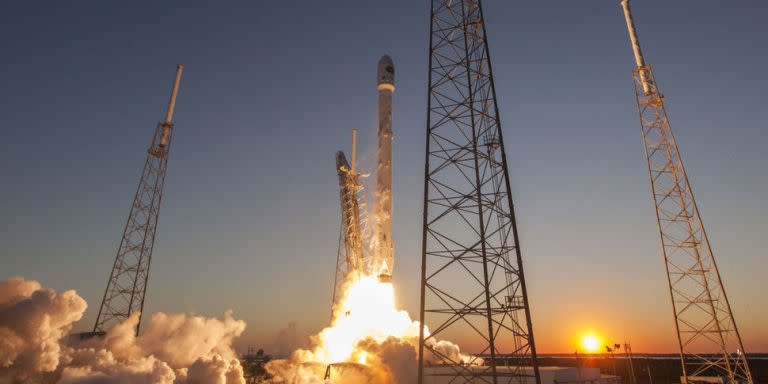SpaceX Announces Cause of Falcon 9 Explosion, Sets New Launch Date

SpaceX believes it has gotten to the core of what caused the Falcon 9 explosion on September 9, 2016, that sent the rocket and the $200 million Facebook satellite it was carrying up in a fiery blaze. The Hawthorne-based spaceflight company also announced that it will return to launching payloads on January 8.
SpaceX explains in a statement that a pressure vessel containing cold helium ruptured when liquid oxygen (LOX) outside the vessel worked its way in between the aluminum tank and its carbon fiber liner. The investigation was conducted in conjunction with the FAA, the U.S. Air Force, NASA, and the National Transportation Safety Board (NTSB). While SpaceX has previously given hints about the cause of the explosion, this seems to be the final word.
From the statement:
The accident investigation team worked systematically through an extensive fault tree analysis and concluded that one of the three composite overwrapped pressure vessels (COPVs) inside the second stage liquid oxygen (LOX) tank failed. Specifically, the investigation team concluded the failure was likely due to the accumulation of oxygen between the COPV liner and overwrap in a void or a buckle in the liner, leading to ignition and the subsequent failure of the COPV.
SpaceX has also announced its next launch date, January 8, the first since the September explosion. A Falcon 9 will carry a satellite built by Iridium Communications into orbit, part of a new 66-satellite constellation program known as Iridium NEXT. SpaceX's return launch will blast off from Vandenberg's Space Launch Complex 4E (SLC-4E).
“Iridium is pleased with SpaceX’s announcement and targeted launch date of January 8 for the first #IridiumNEXT launch. #NEXTevolution https://t.co/zWdkK8FrLG
- Iridium Corporate (@IridiumComm) January 2, 2017
SpaceX completed eight successful launches in 2016 before the September Falcon 9 explosion brought their launch operations to a grinding halt. Here's to many more launches in 2017.
You Might Also Like

